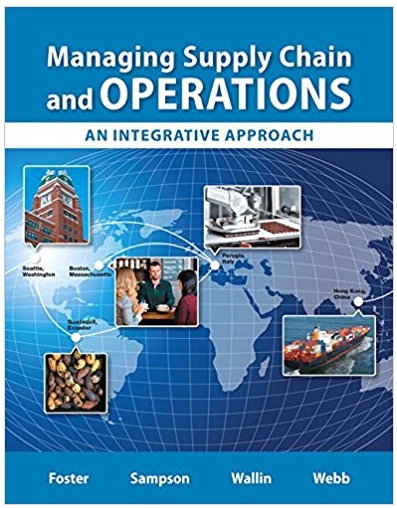Question
Company G (G), an SEC registrant, is a global financial advisory and asset management firm. Company P (P), a private company, offers advisory services for
Company G (G), an SEC registrant, is a global financial advisory and asset management firm. Company P (P), a private company, offers advisory services for (1) mergers, acquisitions, and divestitures; (2) capital structure (including initial public offerings); (3) government advisory, including strategic, finance and capital markets related policy considerations; and (4) restructurings.
Case Facts
On September 18, 20X8, (the “Closing”), G and P executed an acquisition agreement (the “Agreement”) whereby G acquired 100 percent of the outstanding shares of P (the “Acquisition”). At the time of close, P had 10 employees that had over 200 combined years of financial and strategic advisory experience. Company P was owned as follows:
• Founder — 85 percent.
• Senior advisor — 10 percent.
• Other employees (four in total) — 5 percent.
The purchase price was calculated using a revenue multiple that was established using market data at the midpoint and transferred in exchange for 100 percent of the outstanding shares of P. The total purchase price comprised the following:
• Cash = $1 million.
• Shares = 100,000 shares in G (worth $3.3 million).
• Earn out Consideration = Up to 600,000 shares (valued at total of $20 million).
o The Earn out Consideration will be contingent upon achievement of revenue hurdles over a period beginning on September 18, 20X8, and ending on December 31, 20X2 (“Earn out Period”).
o To the extent the performance targets below are achieved, Exchange Co shall deliver the relevant Earn out Shares to the Shareholders on a pro rata basis. However, if and to the extent certain performance targets described below are not achieved, in whole or in part, no Earn out Consideration will be paid.
▪ First Earn out Consideration — If revenue exceeds $10 million in the Earn out Period, the Shareholders will be entitled to 200,000 shares.
▪ Second Earn out Consideration — If revenue exceeds $20 million in the Earn out Period, the Shareholders will be entitled to an additional 200,000 shares.
▪ Third Earn out Consideration — If revenue exceeds $30 million in the Earn out Period, the Shareholders will be entitled to an additional 200,000 shares.
o The Shareholders are still entitled to the Earn out Consideration in the event that targets are met, but they are not employees of G at the time the Earn out Consideration is earned.
Other Key Facts
• Company P meets the definition of a business under ASC 805.
• Each employment agreement executed by G and the Shareholders contains compensation that is commensurate with the service each respective Shareholder is providing to G.
• The Shareholders have at-will employment agreements with G.
• If the Shareholders were to leave, G would be able to replace them with an existing G investment banker; therefore, the Shareholders are not integral to the future success of the acquired business.
• The fair value of P was determined to be $24 million.
• The Earn out Consideration is not being treated as compensation expense for tax purposes.
Required:
1. Should the Earn out Consideration to Shareholders be accounted for as purchase consideration in exchange for the Acquisition or as compensation for post combination services?
2. If there was a change to the case facts, and the Shareholders were no longer entitled to the Earn out Consideration if they were not employees of G at the time the revenue targets were met, should the Earn out Consideration to the Shareholders be accounted for as purchase consideration in exchange for the Acquisition or as compensation for post combination services?
Step by Step Solution
3.47 Rating (167 Votes )
There are 3 Steps involved in it
Step: 1
ASC 805 Business combination deals with contingent consideration where a part of the consideration is contingent on certain conditions like future per...
Get Instant Access to Expert-Tailored Solutions
See step-by-step solutions with expert insights and AI powered tools for academic success
Step: 2

Step: 3

Ace Your Homework with AI
Get the answers you need in no time with our AI-driven, step-by-step assistance
Get Started


